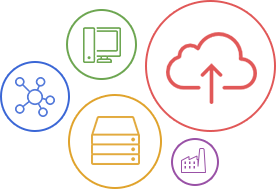In the world of Information Technology, successful infrastructure management often boils down to striking the right balance between hardware and software investments. Both play critical roles in driving business operations, but each comes with its own set of considerations such as cost, scalability, performance, and alignment with business objectives. This article aims to shed light on these considerations and provide a roadmap for organizations seeking to optimize their IT infrastructure through balanced investments in hardware and software.
The Role of Hardware in IT Infrastructure
"Hardware forms the backbone of any IT infrastructure. This includes servers, storage devices, networking equipment, and workstations. These components are the tangible elements that support the operation of the entire IT system."- Emil Isanov
Investing in quality hardware can offer several benefits like increased reliability, improved performance, and longevity. However, it's crucial to align hardware investments with the needs and growth projections of the business. Over-investment can lead to unnecessary expenditure, while under-investment can result in performance bottlenecks or the inability to scale operations efficiently as the business grows.
The Role of Software in IT Infrastructure
Software, on the other hand, is the set of instructions that tell the hardware what to do. It includes operating systems, databases, business applications, security tools, and more. The right software can help streamline business operations, improve productivity, ensure data security, and provide valuable insights for decision-making.
However, like hardware, software investments should also align with business needs. Organizations must carefully consider factors like functionality, compatibility, scalability, and cost-effectiveness when investing in software.
Also Read: Securing Your Data: Efficient Backup and Recovery Plans for Businesses
Striking the Right Balance
Balancing investments between hardware and software is not a simple task, as it requires a deep understanding of the organization's current needs, future goals, and the relationship between the various elements of the IT infrastructure.
The hardware-software balance must be flexible enough to adapt to changes in business requirements or advancements in technology. Regular reviews and updates to the IT strategy can help maintain this balance.
Moreover, hardware and software should not be viewed as isolated components. Instead, they should be seen as two sides of the same coin, each complementing and enhancing the capabilities of the other. A state-of-the-art server is of little use without the right operating system and applications, just as the most advanced software cannot perform well on outdated or inadequate hardware.
Also Read: Best Free Antivirus Software 2020
Conclusion
Investing in IT infrastructure is a significant decision that can have far-reaching effects on an organization's performance and growth. Therefore, finding the right balance between hardware and software investments is critical. By aligning these investments with business objectives and harnessing the synergies between hardware and software, organizations can build an optimized, resilient, and scalable IT infrastructure that serves as a robust foundation for their operations and future growth.
.png)
Facebook: facebook.com/etech7
Twitter: twitter.com/etech7
Instagram: instagram.com/etech_7/
Blog: blog.etech7.com/














